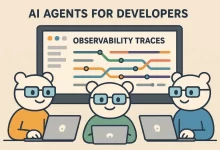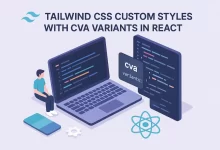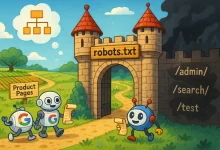14 Articles
Tags :Development

UI design trends 2025 are transforming how we interact with digital products. A couple of years ago, I was working late on a side project and realized my old dashboard design—cluttered menus, poor contrast, and slow animations—felt outdated. When I refactored it with new UI design patterns like adaptive dark mode, smoother motion, and clean typography, the difference was night and day. Users immediately commented that it felt “fresher” and “easier to use.” That moment convinced me: design trends matter not just for looks, but for usability, trust, and adoption. Why UI Design Trends 2025 Matter Design is never static. Just like frameworks and programming languages evolve, UI has its cycles. UI design trends 2025 represent where users’ expectations...

AI agents for developers are finally being judged by the only metric that matters—do they help us ship better software, faster, with fewer surprises? I remember a Thursday night last winter when our release candidate started failing in staging. Our tiny agent looked at the logs, grabbed a recent runbook, and suggested rolling back a questionable feature flag. It wasn’t glamorous. It was calm and specific. We still reviewed the plan, but that little helper cut thirty minutes from a sticky incident and let us ship before midnight. That’s the energy of this piece. No theatrics, just field-tested moves for building agent systems that don’t flake out under pressure. We’ll look at the architecture that keeps you sane, the retrieval...

Tailwind CSS custom styles changed how I ship front-ends. A quick story: one late Friday I promised a client a dark-mode dashboard “by Monday.” I had a raw React app, a sketchy color palette, and way too much coffee. Twelve hours later—thanks to Tailwind’s theme.extend, a tiny plugin, and a couple of @layer utilities—that dashboard looked like a product. Not a prototype. Since then, my rule is simple: keep styles composable, automate the boring parts, and make it easy for teammates to do the right thing without thinking. This guide follows that mindset. We’ll mirror a practical structure you can follow step-by-step: integrate Tailwind in React, understand the core directives, extend the theme, create reusable component classes, write and package...

Mac development environment setup can either be a runway or a maze. I learned that the messy way—new M‑series Mac, new client, late Thursday night. I had exactly one evening to get a backend service compiling, a React app hot‑reloading, and a test database seeded. Two hours in, Docker decided it didn’t like ARM, my shell theme blinked like a Christmas tree, and Postgres refused to start. I took a breath, grabbed a marker, and wrote three words on a sticky note: “repeatable, minimal, fast.” What follows is the battle‑tested playbook that grew from that night and a dozen laptops since. Who this is for (and the promise I’m making) If you build web apps, APIs, mobile apps, data...

It all started with a nasty null-pointer on a client demo day. I tossed the stack trace into Claude, sipped my lukewarm latte, and—bam!—it handed back a patch before the foam collapsed. That moment hard-wired Claude Code efficiency into my daily grind. Below are the fifteen hacks that keep my repos humming; each section dives deep, then shows a side-by-side “Newbie Prompt” versus “Pro Prompt” so you can level-up at your own pace. 1. Warm-Up in the Playground—Master the Interface First The browser playground may look like a toy, but treating it as a gym lets you bench-press bigger code later. Spend fifteen focused minutes tinkering: paste a hello_world.py, toggle “Explain Code,” then swap in “Improve Complexity”. You’ll spot how...

Fastest Web Framework 2025 – Is Astro Really Out-Running Next.js? Confession time: Back in January I rebuilt my side-project blog three different ways on a long weekend just to brag about squeezing out a 95 Lighthouse score. My partner called it “code-surfing”. I call it curiosity – and it kicked off the quest that birthed this monster deep-dive into the fastest web framework 2025 topic. We’re gonna pit Astro 3.8 against Next.js 15 in an unfiltered, no-excuses brawl. I measured raw speed, developer experience, hosting cost, even how future-proof each feels. Buckle up – by the end you’ll know exactly which stack deserves your next green-field build. Why Page-Load Speed Matters More Than Ever in 2025 You’ve heard the stats. Every...

Google Stitch: The AI-Powered UI Design Revolution When Google announced Stitch, its experimental AI-driven UI design assistant powered by Gemini 2.5 Pro, the design community paused to consider a new reality: What happens when artificial intelligence can instantly create production-grade interfaces from natural-language prompts or simple sketches? For many UI and UX designers, the question on everyone’s mind is whether this game-changing tool will make their roles obsolete—or simply empower them to achieve more. What Is Stitch and How Does It Work? At its core, Stitch is an ambitious Google Labs project that harnesses a state-of-the-art multi-modal AI model (Gemini 2.5 Pro) to interpret text, images, and wireframe inputs. In practical terms, designers (or non-designers) can type a description like,...

Search Engine Optimization (SEO) can feel like an ever-shifting labyrinth, but every site owner can master one fundamental file: robots.txt. Think of it as your website’s gatekeeper, directing search engine spiders where to crawl—and equally importantly—where not to crawl. A properly configured robots.txt ensures that Googlebot, Baiduspider, and their peers focus on your most valuable pages and ignore the low-value or sensitive ones. In this guide, we’ll walk through what robots.txt is, explore common rookie mistakes, reveal advanced tips to optimize crawl budget, and share practical check-and-fix methods to keep your file in top shape. 1. What Is robots.txt? The Digital Gatekeeper At its core, robots.txt is a plain text file stored in the root directory (e.g., https://example.com/robots.txt) that instructs...

Hey everyone! If you’re involved in JavaScript development, you’ve undoubtedly heard about Bun, the rising star that has quickly become the talk of the community. Node.js has been the backbone of JavaScript runtimes for years, but now, in 2025, the question is more relevant than ever: Should you switch your runtime from Node.js to Bun? Let me break down my thoughts, experiences, and findings to help you decide. Why Consider Bun in the First Place? Bun emerged as a fresh alternative, promising impressive speed and simplified workflows. It’s built with modern standards and improved security, focusing heavily on performance—exactly where developers faced bottlenecks with Node.js. Here are some key points worth mentioning: Bun’s Major Benefits Blazing Fast Performance: Bun utilizes...

When you embark on creating a mini-game, choosing the right engine is critical. Unity and Cocos stand out as two of the most popular and powerful game engines available today. This guide offers an original comparison highlighting the strengths and weaknesses of each engine, helping you select the perfect fit for your mini-game project. Unity: Versatility and Advanced Features Strengths: Cross-Platform Power: Unity excels at deploying games seamlessly across platforms, from mobile devices and PCs to web browsers and consoles, ensuring maximum reach. Rich Asset Marketplace: Unity’s extensive asset store provides an abundance of ready-made resources, significantly speeding up development cycles. Robust 3D and 2D Capabilities: Ideal for both complex 3D graphics and smooth 2D animations, Unity offers flexibility unmatched...


 FoxDoo Technology
FoxDoo Technology FoxDoo Technology
FoxDoo Technology







